Balance In Our Lives
BALANCE IN OUR LIVES (ISSUE 168) MARCH 3, 2015
By Diane Gold
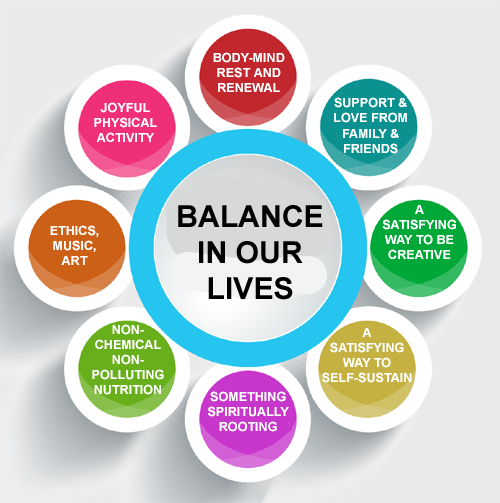 Balance in our lives seems like a “played out” expression, verbal hype that marketers, coaches or therapists (sometimes hard to tell them apart until we look at their wall) use to lure us into buying their coaching programs. But the reason so many people seek out the programs (like warriorsofweight-consulting), even if advertising leads us to them, is that many of us don’t have a system that works.
Balance in our lives seems like a “played out” expression, verbal hype that marketers, coaches or therapists (sometimes hard to tell them apart until we look at their wall) use to lure us into buying their coaching programs. But the reason so many people seek out the programs (like warriorsofweight-consulting), even if advertising leads us to them, is that many of us don’t have a system that works.
THE BALANCE FORMULA
I believe that we each need some sort of balance formula, a set of categories within our systematic approach to living our best life. For me, today, I have included:
1) body-mind rest and renewal, without which we are not good to ourselves or others;
2) support and love from family and friends, without which we stagnate;
3) a satisfying way to be creative, without which we leave our artist untapped;
4) a satisfying way to self-sustain, without which we are less productive (please note that not everyone needs to have a job or career; some choose to trade services; others choose adventures other than the regular work model);
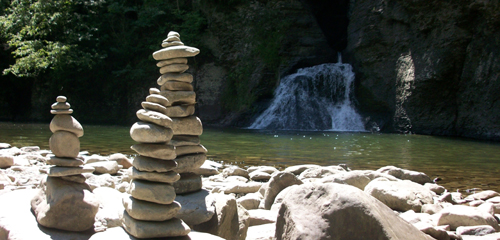
5) something spiritually rooting, without which we look for a root;
6) non-chemical, non-polluting nutrition, which means without plastic and metal leaching from cookware and dishware, which means no genetic modification in the seeds, which means no type of food that causes global depletion (such as methane run off from livestock, dead zones from overfishing, soil depletion and desertification of land from animal grazing in dairy farms or cattle ranches) which leaves us with organic plant-based food;
7) ethics, music, art, without which we are not whole human beings;
8) joyful physical activity, without which we do not stimulate our body’s systems to stay healthy.
Which ones of mine are yours?
PLEASE NOTE
This formula does not include shelter and clothing, although these are quite necessary. It also does include something spiritual which does include self-esteem and other things that do not have to do with our physical nature. It is a general outline.
Suffice it to say there is no one right way or best way. I prefer this way, you prefer that way, she prefers a completely different way and he prefers a combination of yours and hers. The idea is to have one, or, at least, think about developing one. It’s handy, not too tough to create and comes in, oh, so handy, on a daily basis.
We may have heard someone say,
“I’m missing something,”
or
“I feel like there’s a hole inside me.”
Even the expression,
“I have to get myself together,”
means a gathering of behaviors, reactions and choices so that we more clearly live our best vision of and for ourselves and others at that point in time and onward.
We all feel, at least, a little as if we have to make some adjustment at one time or other. It’s part of the process we go through where we reshuffle ourselves to become more (here comes the word again) in balance, where we make personal changes to become more supportive of our goals and ourselves.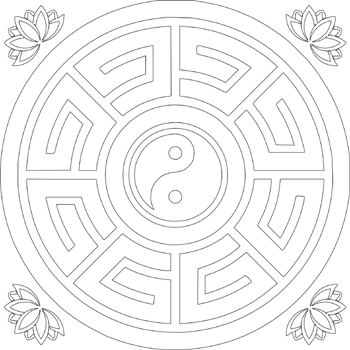
THE WHEEL OF BALANCE
We can almost think of the formula as a wheel of balance with each category a spoke. What I would put in as the categories that we need to balance life are these. As I said before, each of us may differ; although, we, humans, are not all that different and most of us would include these in our list.
MAKING ADJUSTMENTS: OUR ACTION STEP
Now that we have an infrastructure, a framework, an outline from which to work; we can decide what to keep, what to add, what to omit. So let’s self-evaluate, slowly, consistently and on a continual basis. Once we get ourselves in balance, we change. And we actually do change daily. So, it would make sense to go through this process frequently to see whether the balance in our lives required major or minor tailoring.
A good example might be for us to look at an aircraft in the wind. Whether it’s a hang glider or a jet, as the wind changes, which it does continually, the pilot makes changes to accommodate it, from mini-changes all the way up to rerouting or not flying.
This adjustment is something we should look at daily. It will serve us well.
CONCLUSION
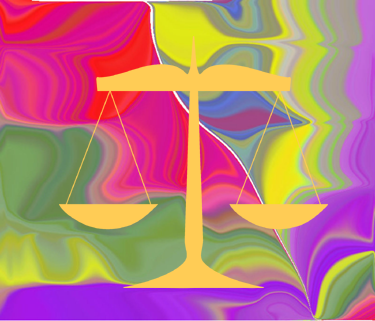 The balance in our lives is really a process. It’s not one place we obtain and stay. As with the wind, there are always new goals, new conditions, new feelings, new advantages, new obstacles for which or from which to adapt.
The balance in our lives is really a process. It’s not one place we obtain and stay. As with the wind, there are always new goals, new conditions, new feelings, new advantages, new obstacles for which or from which to adapt.
Whether we compromise to accommodate a loved one or change a spiritual outlook or activity; it is important to include the entire assortment. In the meantime while each person is figuring out balance in our lives, the outline above is a starting point.
ANOTHER NOTE
I always say I am a better editor than I am a writer. In seeing the balance in our lives wheel, above, I immediately began to edit it. But, when we put too many things in, we get lost in the weeds.
So this is good for now. I’m sure tomorrow, I will see something new because I will be new. And so will you.
![]()
If you wish to share your story, please hit reply in your email program to be contacted.
If you need habit help, go to warriorsofweight-consulting.
![]()
FEEDBACK
We value your feedback very much.
Please leave a comment below.
Please LIKE us on the website and at
WarriorsOfWeight on Facebook.
You can also follow us on Twitter: @warriorsoweight.
Thanks.
![]()
DIANE GOLD, PUBLISHER AND AUTHOR
Diane Gold, Founder of Warriors of Weight, Turning Habits Into Health, is a mentor in tai chi, kung fu and meditation, a music, fitness and stress expert, dedicated mom, studying peaceful conflict resolution and habit replacement, certified in Whole-Foods Plant-Based Nutrition.
She believes that small, consistent changes in our lives mount to ever improving quality of life improvements. She says,
“If we are consistent and relaxed, we will make ourselves more fluid, more powerful, more meaningful, more healthy than the day before.
“We each look at life from a different perspective. Most of us require similar things, though: love from other people, creativity, productivity, music, art, fitness and a way to make some sort of difference. We each decide how to balance ourselves.
“And, then, there’s the great opportunity. We can make changes at any time. As we feel the need, we change to support our own balance.
“In the meantime, let us all take good care of ourselves, because we are so worth it!”![]()

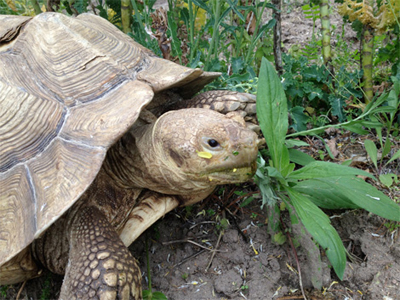 Let’s talk about Extinction and Loss Of Species, and are we responsible?
Let’s talk about Extinction and Loss Of Species, and are we responsible?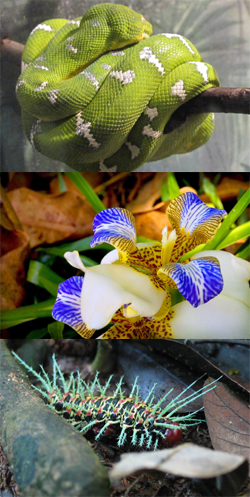 There needs to be a correction, and also modification of a particular concept, to the recently published article I had written for the North American Vegetarian Society (“Meat: no longer just a factory farm issue” in Vegetarian Voice 2012) regarding biodiversity loss.
There needs to be a correction, and also modification of a particular concept, to the recently published article I had written for the North American Vegetarian Society (“Meat: no longer just a factory farm issue” in Vegetarian Voice 2012) regarding biodiversity loss.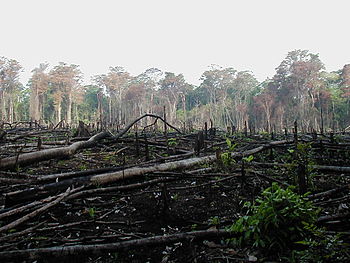 1) We are losing species of life as well as ecosystems on Earth at an unprecedented and alarming rate, estimated to be anywhere between 1,000 and 10,000 times the “background rate”—that which had been seen for the previous several thousands of years. Therefore, it is this massive rate of extinction rather than number of loss that becomes a more meaningful metric and cause for concern.
1) We are losing species of life as well as ecosystems on Earth at an unprecedented and alarming rate, estimated to be anywhere between 1,000 and 10,000 times the “background rate”—that which had been seen for the previous several thousands of years. Therefore, it is this massive rate of extinction rather than number of loss that becomes a more meaningful metric and cause for concern.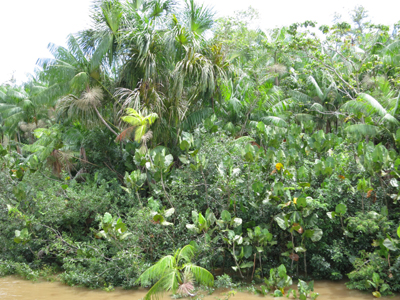 2) It is difficult, if not impossible, to accurately predict the number of species loss per year because of a number of factors. One of the largest unknowns is the exact amount of species that we have on earth, which is a needed component when attempting to determine total numbers of species loss when using an extinction prediction equation. This is one of the reasons the Species Area Curve Relationship method of extinction calculation has led to speculation and wide ranges of numbers of extinct species.
2) It is difficult, if not impossible, to accurately predict the number of species loss per year because of a number of factors. One of the largest unknowns is the exact amount of species that we have on earth, which is a needed component when attempting to determine total numbers of species loss when using an extinction prediction equation. This is one of the reasons the Species Area Curve Relationship method of extinction calculation has led to speculation and wide ranges of numbers of extinct species.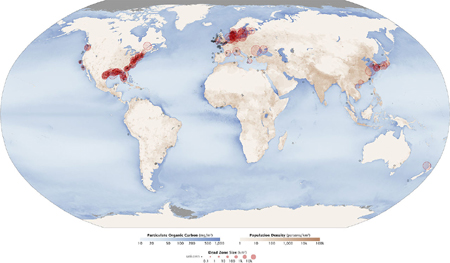 There has been widespread thought that marine species were more resilient to extinction and our further exploitation. However, there is finally a growing amount of evidence that fish and wildlife in our oceans are as, or more, vulnerable to extinction than many terrestrial and freshwater species. Extinction – Fish Vulnerable To Extinction
There has been widespread thought that marine species were more resilient to extinction and our further exploitation. However, there is finally a growing amount of evidence that fish and wildlife in our oceans are as, or more, vulnerable to extinction than many terrestrial and freshwater species. Extinction – Fish Vulnerable To Extinction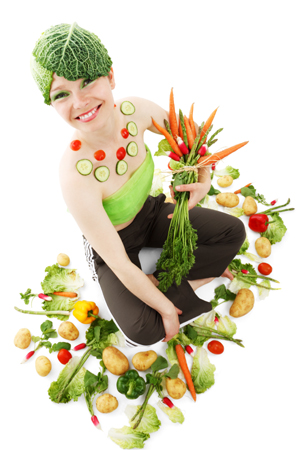
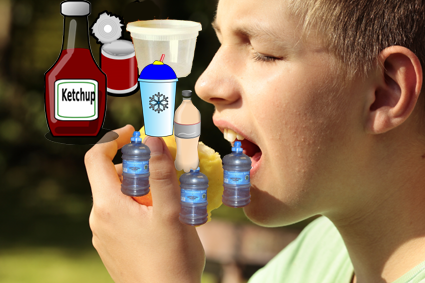 Most of us consume plastics in food. We don’t set out to do it, but some of our plastic technology disintegrates into our food and, therefore, into our blood.
Most of us consume plastics in food. We don’t set out to do it, but some of our plastic technology disintegrates into our food and, therefore, into our blood.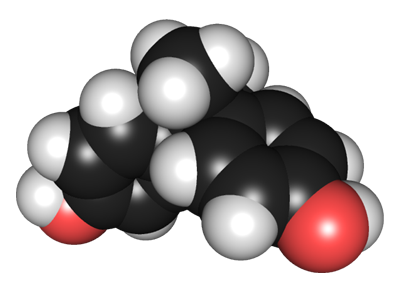 Bisphenol A (BPA) is a chemical that has been studied to find that it can disrupt estrogen. It is found as one of the ingredients in many plastics.
Bisphenol A (BPA) is a chemical that has been studied to find that it can disrupt estrogen. It is found as one of the ingredients in many plastics.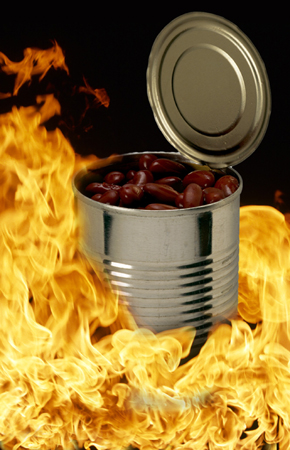 The National Congress Of Legislatures lists the following:
The National Congress Of Legislatures lists the following: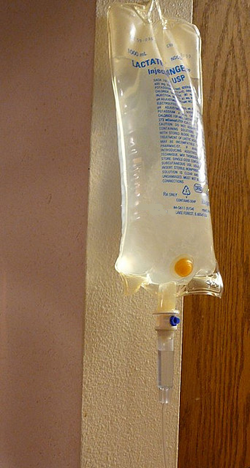 Phthalates are chemicals used in plastic to make it softer or more pliable. Picture one of those IV bags up on a pole that we see on TV or have received in the hospital to get fluids or medicine. The ones in the hospital contain DEHP, diethylhexyl phthalate. It makes the plastic less stiff so bags can be made with thickness to insure non-breakage.
Phthalates are chemicals used in plastic to make it softer or more pliable. Picture one of those IV bags up on a pole that we see on TV or have received in the hospital to get fluids or medicine. The ones in the hospital contain DEHP, diethylhexyl phthalate. It makes the plastic less stiff so bags can be made with thickness to insure non-breakage.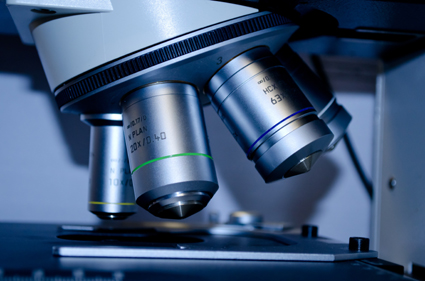 Why would no company or agency do research on whether or not plastics are safe? The answer has to do with, you may have guessed it, profit. If companies did research about plastics in food, chances are, someone would hear about it and publish the results The big D companies and the conglomerate cookware companies don’t want to do any research that might show their products are dangerous. They also discourage others from doing them.
Why would no company or agency do research on whether or not plastics are safe? The answer has to do with, you may have guessed it, profit. If companies did research about plastics in food, chances are, someone would hear about it and publish the results The big D companies and the conglomerate cookware companies don’t want to do any research that might show their products are dangerous. They also discourage others from doing them.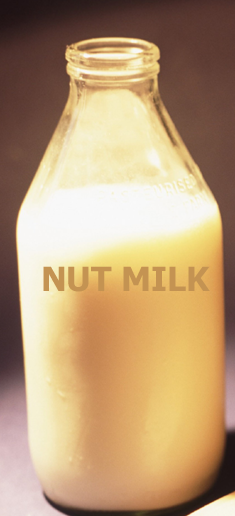 Nut milk is one of the most delicious, nutritious foods I have ever had the pleasure of ingesting, and, of late, of preparing. Until about a week ago, I had always bought nut milk: almond milk, flax milk, soy milk. The process began when I no longer chose to drink flax milk that was not organic. I had been happily buying this wonderful flax milk whose manufacturers promised they were working on putting out an organic version.
Nut milk is one of the most delicious, nutritious foods I have ever had the pleasure of ingesting, and, of late, of preparing. Until about a week ago, I had always bought nut milk: almond milk, flax milk, soy milk. The process began when I no longer chose to drink flax milk that was not organic. I had been happily buying this wonderful flax milk whose manufacturers promised they were working on putting out an organic version.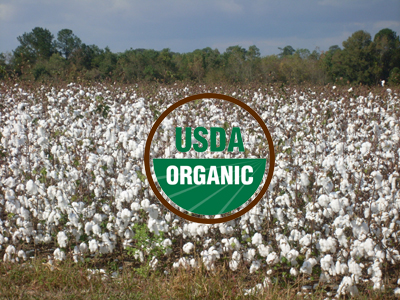 The instruction included the use of some type of straining cloth as for tofu or gauze which I didn’t have so I haven’t been using, plus my smoothies are always very thick and full of seed fiber. Another interesting thing is that it is not very common to find organic cotton tofu cloth. This means the alternative would somewhat defeat the idea of using organically grown, non-GMO, nuts or seeds, since most cotton is genetically modified and would have the distinction of being certified non-GMO if it were organic. So I had hesitated in the past.
The instruction included the use of some type of straining cloth as for tofu or gauze which I didn’t have so I haven’t been using, plus my smoothies are always very thick and full of seed fiber. Another interesting thing is that it is not very common to find organic cotton tofu cloth. This means the alternative would somewhat defeat the idea of using organically grown, non-GMO, nuts or seeds, since most cotton is genetically modified and would have the distinction of being certified non-GMO if it were organic. So I had hesitated in the past.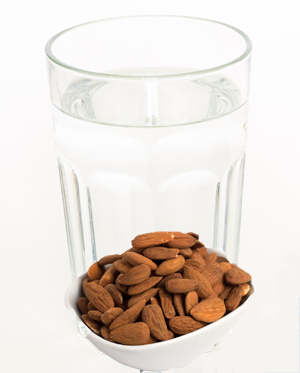 I put 2 cups of filtered water in a glass with a little more than a half cup of almonds, fulfilling my ratio of 4 to 1 for nut milk. I found some chlorine-free parchment paper and covered the glass. I still haven’t figured out a way to stabilize the covering, but I put the glass in the refrigerator overnight. The next morning, I put the water and the almonds in the blender and blended for about a minute. What I got was thicker than the store bought variety nut milk, was a lovely organic, perfectly fresh nut milk and did not contain any of the gums or supplements possibly made from the synthetics that are allowed by the Organic Board. And, look, Mom and Dad, I made it myself.
I put 2 cups of filtered water in a glass with a little more than a half cup of almonds, fulfilling my ratio of 4 to 1 for nut milk. I found some chlorine-free parchment paper and covered the glass. I still haven’t figured out a way to stabilize the covering, but I put the glass in the refrigerator overnight. The next morning, I put the water and the almonds in the blender and blended for about a minute. What I got was thicker than the store bought variety nut milk, was a lovely organic, perfectly fresh nut milk and did not contain any of the gums or supplements possibly made from the synthetics that are allowed by the Organic Board. And, look, Mom and Dad, I made it myself.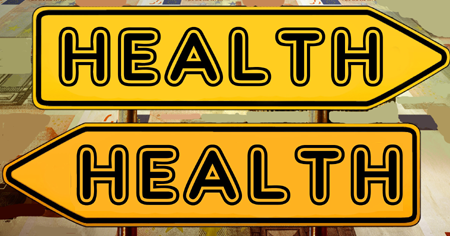 There’s one great reason to drink nut milk: we love ourselves and care about our health. According to the Physicians Committee For Responsible Medicine, 75% of the world (25% in the US) is lactose intolerant. This is true because most of us lose our lactase enzyme (present in babies and toddlers) which allows us to successfully break down milk for use by the bloodstream. So, some of us, after age 3, cannot break down milk and notice difficulty in drinking it.
There’s one great reason to drink nut milk: we love ourselves and care about our health. According to the Physicians Committee For Responsible Medicine, 75% of the world (25% in the US) is lactose intolerant. This is true because most of us lose our lactase enzyme (present in babies and toddlers) which allows us to successfully break down milk for use by the bloodstream. So, some of us, after age 3, cannot break down milk and notice difficulty in drinking it.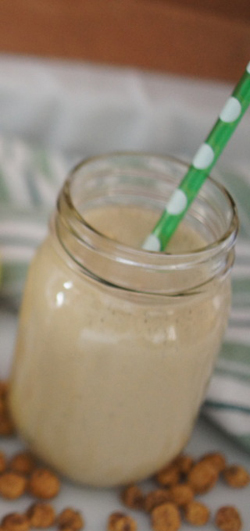 Aside from the health aspects, nut milk made easily is a supreme convenience for me. It means I can make nut milk as long as I have nuts and a blender.
Aside from the health aspects, nut milk made easily is a supreme convenience for me. It means I can make nut milk as long as I have nuts and a blender. I soak flax seeds overnight, and then, I grind them to break open the hulls. This is a mess. But, I like it. It’s less money than buying the high speed machine that devours every part of every food so grinding is not needed.
I soak flax seeds overnight, and then, I grind them to break open the hulls. This is a mess. But, I like it. It’s less money than buying the high speed machine that devours every part of every food so grinding is not needed.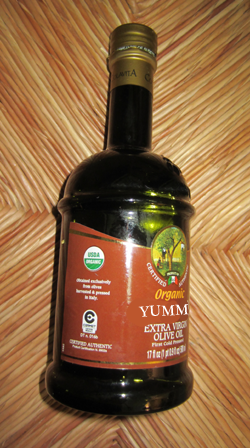 Olive oil science is much more elusive than discussions about how great olive oil is. There is lots of vague discussion about how it is bad for us when it smokes. Much like treated wood when it burns, the olive oil spits out toxins which produce free radicals, nasty suckers that cruise the body for a place to move in and couple. My goal in writing his article was to find the science behind all the generic verbiage about what happens to olive oil at smoke point.
Olive oil science is much more elusive than discussions about how great olive oil is. There is lots of vague discussion about how it is bad for us when it smokes. Much like treated wood when it burns, the olive oil spits out toxins which produce free radicals, nasty suckers that cruise the body for a place to move in and couple. My goal in writing his article was to find the science behind all the generic verbiage about what happens to olive oil at smoke point.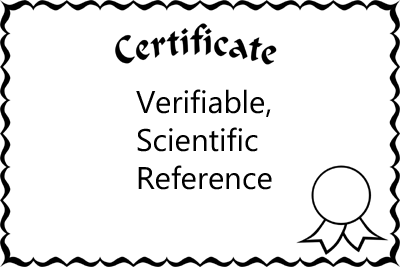 During my olive oil science search, I read about many TV chefs who use extra virgin olive oil for sauteing, roasting and grilling and lots of consumer opins about how, if the TV chef says it, it must be right.
During my olive oil science search, I read about many TV chefs who use extra virgin olive oil for sauteing, roasting and grilling and lots of consumer opins about how, if the TV chef says it, it must be right.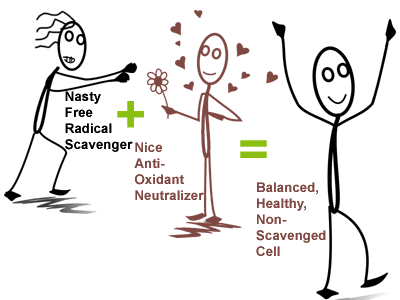 Happily for all of us, Mark goes on to cite an article that explains what is produced and what is toxic about it, for which I thank him. It is from Science Daily’s June 17, 2005 article, sourced from Elhuyar Fundazioa (translated to Language Foundation), from U of the Basque Country Pharmacy Faculty.
Happily for all of us, Mark goes on to cite an article that explains what is produced and what is toxic about it, for which I thank him. It is from Science Daily’s June 17, 2005 article, sourced from Elhuyar Fundazioa (translated to Language Foundation), from U of the Basque Country Pharmacy Faculty.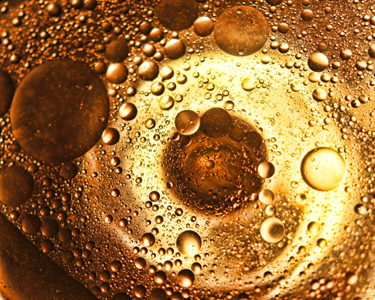 “You cannot test oil for its smoking point on your stove. The so-called ‘smoking point’ is actually the point at which the molecules of your oil start falling apart. This happens long before there is any visible smoke above the pan. At the point where you can see the smoke, it is already too late.” (rumtscho at stackexchange.com)
“You cannot test oil for its smoking point on your stove. The so-called ‘smoking point’ is actually the point at which the molecules of your oil start falling apart. This happens long before there is any visible smoke above the pan. At the point where you can see the smoke, it is already too late.” (rumtscho at stackexchange.com)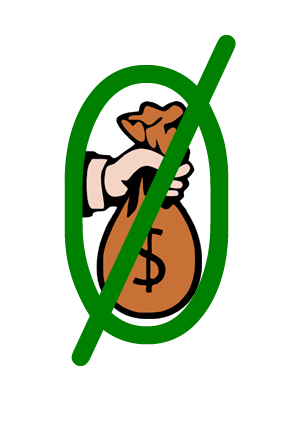 Our habit of not paying for our food is common. Since most of us are basically moral and would not thoughtfully take food without growing it or compensating the grower for it, this statement needs further discussion. We’ll start with the upfront premise that it is our duty to preserve our humanity and whatever else lives on our planet with good food.
Our habit of not paying for our food is common. Since most of us are basically moral and would not thoughtfully take food without growing it or compensating the grower for it, this statement needs further discussion. We’ll start with the upfront premise that it is our duty to preserve our humanity and whatever else lives on our planet with good food.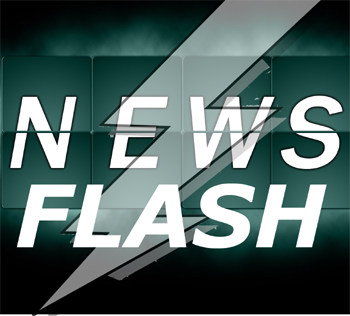 Newsflash! Currently, no one pays a monetary price for this. Everyone’s grandchildren will pay for it.
Newsflash! Currently, no one pays a monetary price for this. Everyone’s grandchildren will pay for it.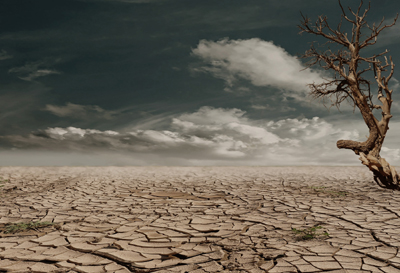 This means no one pays financially for the circumstances we create, and no one pays to clean what we dirty.
This means no one pays financially for the circumstances we create, and no one pays to clean what we dirty.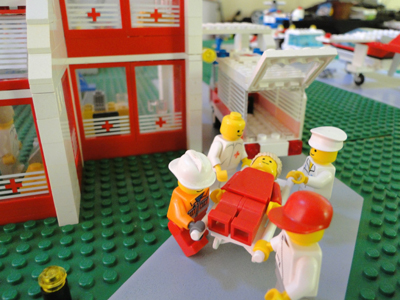 (If we wanted to look from a health perspective, we also pay because eating meat, fish, fowl and dairy cause health issues. So, we pay with our health.)
(If we wanted to look from a health perspective, we also pay because eating meat, fish, fowl and dairy cause health issues. So, we pay with our health.)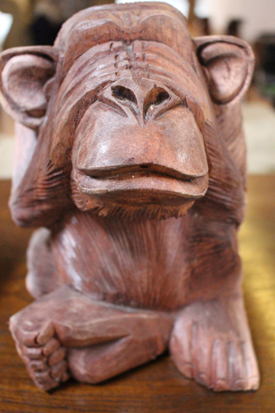 If we don’t educate ourselves because we listen to Big News which is close friends with Big Agro which miseducates us or omits how agriculture drives global depletion fueled by our gluttony; we are closing our eyes and failing to learn. Many teachers are not yet aware of the vast differences in land, oceans, air, soil used to farm animals or plants. Even if we don’t mean to do it, if we don’t investigate how we are not paying, we perpetuate the hurt.
If we don’t educate ourselves because we listen to Big News which is close friends with Big Agro which miseducates us or omits how agriculture drives global depletion fueled by our gluttony; we are closing our eyes and failing to learn. Many teachers are not yet aware of the vast differences in land, oceans, air, soil used to farm animals or plants. Even if we don’t mean to do it, if we don’t investigate how we are not paying, we perpetuate the hurt.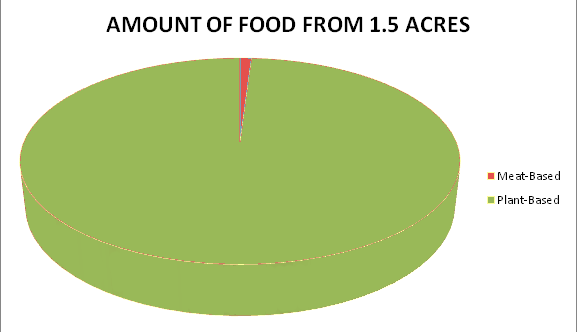 3)
3) 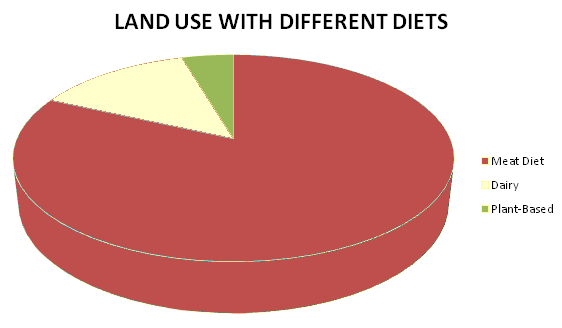 4)
4)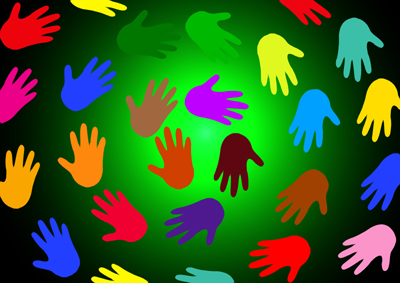 John Perkins told a story about the Shuar Tribe in Ecuador. One of the community came back to the elders with news that a plant along the trail was healthy when he went by, but 72 hours later, when he came back, the plant was sick. The elders had a council meeting, conferring with a wise one who said the plant gave a sign that the path was overused. They decided to take community responsibility and ruled to close the path.
John Perkins told a story about the Shuar Tribe in Ecuador. One of the community came back to the elders with news that a plant along the trail was healthy when he went by, but 72 hours later, when he came back, the plant was sick. The elders had a council meeting, conferring with a wise one who said the plant gave a sign that the path was overused. They decided to take community responsibility and ruled to close the path.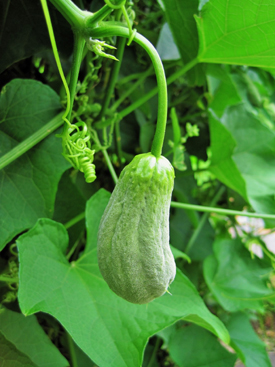
 To be more productive and love it more, (1), because we actually will be making a critical difference and (2), because we will be having a great time doing it, is a common aspiration. Who can make that happen, though? There are so many compromises and lots of complicated layers to everything.
To be more productive and love it more, (1), because we actually will be making a critical difference and (2), because we will be having a great time doing it, is a common aspiration. Who can make that happen, though? There are so many compromises and lots of complicated layers to everything. Let’s say we wish to manage a project, but no one has assigned us this role. We can create our own project so that we create our own role as project manager. This can be done as part of what we do for our daily livelihood or as our own personal project. It can be for 1 minute a day. Everyone has that much time. It can also be for an hour.
Let’s say we wish to manage a project, but no one has assigned us this role. We can create our own project so that we create our own role as project manager. This can be done as part of what we do for our daily livelihood or as our own personal project. It can be for 1 minute a day. Everyone has that much time. It can also be for an hour. When we make our own food, we are caring for ourselves. We get to create nutritious art plus we get to make ourselves healthy by choosing ingredients that include vitamins, minerals, nutrients and phytonutrients that fortify us from harm and make us strong.
When we make our own food, we are caring for ourselves. We get to create nutritious art plus we get to make ourselves healthy by choosing ingredients that include vitamins, minerals, nutrients and phytonutrients that fortify us from harm and make us strong.

 This one seems easy. Because we have such full days, we sometimes tend to overdo it before settling down to sleep. At these times, we might find we have not left enough sleep time to feel rested and awesome for our next day.
This one seems easy. Because we have such full days, we sometimes tend to overdo it before settling down to sleep. At these times, we might find we have not left enough sleep time to feel rested and awesome for our next day. 5 Ways To Improve Your Health And Mine will pick areas that are commonly important to us all. How can we go wrong with these options? Feeling healthy makes us feel happier, be more self-sufficient, be stronger on a daily basis, build our body’s foundation and position ourselves for a longer life. So, let’s consider whatever of these ways makes sense and add one to our lives for the new year.
5 Ways To Improve Your Health And Mine will pick areas that are commonly important to us all. How can we go wrong with these options? Feeling healthy makes us feel happier, be more self-sufficient, be stronger on a daily basis, build our body’s foundation and position ourselves for a longer life. So, let’s consider whatever of these ways makes sense and add one to our lives for the new year. Obviously, we are involved in breathing all day. The body regulates this action automatically, if we don’t. But we can pay deliberate attention to it for extra health. When we slow down and pay attention to the air that goes in and the air that comes out, we build up life energy, almost as if we are storing valuables in a vault. Not much time is needed here, either. Just consistency.
Obviously, we are involved in breathing all day. The body regulates this action automatically, if we don’t. But we can pay deliberate attention to it for extra health. When we slow down and pay attention to the air that goes in and the air that comes out, we build up life energy, almost as if we are storing valuables in a vault. Not much time is needed here, either. Just consistency. Water is crucial. The more fruits and veggies we eat, the more water we have to drink as water. As long as we keep our body’s water balanced, 65% of our body mass, we will be in good shape. The body has water inside our cells, called intracellular fluid. It also has water outside the cells, extracellular fluid, such as water in blood, spine, stomach, both of which have to be kept balanced. Food and salt intake concentrate the “out of cell” fluid while less dilute it.
Water is crucial. The more fruits and veggies we eat, the more water we have to drink as water. As long as we keep our body’s water balanced, 65% of our body mass, we will be in good shape. The body has water inside our cells, called intracellular fluid. It also has water outside the cells, extracellular fluid, such as water in blood, spine, stomach, both of which have to be kept balanced. Food and salt intake concentrate the “out of cell” fluid while less dilute it. The great news about stretching is that we can do it almost anywhere. We have joints that move while we are stationary, so we can think of a body part and begin to move it. Moving it brings heat, blood with life-sustaining oxygen, and flexibility. We do not need any special exercise.
The great news about stretching is that we can do it almost anywhere. We have joints that move while we are stationary, so we can think of a body part and begin to move it. Moving it brings heat, blood with life-sustaining oxygen, and flexibility. We do not need any special exercise. In the past several decades, in the United States, there has been talk about superfoods. The word, superfoods, has been so overused by the nutritional supplement industry that it’s hard to know what’s marketing and what’s science.
In the past several decades, in the United States, there has been talk about superfoods. The word, superfoods, has been so overused by the nutritional supplement industry that it’s hard to know what’s marketing and what’s science. Whether we sleep alone or together, taking a short moment to put a smile into ourselves before we fall asleep will cause relaxed mind and muscles and make for good dreams and restful sleep.
Whether we sleep alone or together, taking a short moment to put a smile into ourselves before we fall asleep will cause relaxed mind and muscles and make for good dreams and restful sleep. AT PEACE WITH DIANE GOLD
AT PEACE WITH DIANE GOLD 
 Making a difference is certainly subjective. There’s no disputing, though, that every move we make changes something. While one person might plant spices to get personal produce, someone else might be a mentor in a literacy program and another someone else might create a way to keep food stored more efficiently. Yet another person might be the clerk in a grocery store or someone’s car washer.
Making a difference is certainly subjective. There’s no disputing, though, that every move we make changes something. While one person might plant spices to get personal produce, someone else might be a mentor in a literacy program and another someone else might create a way to keep food stored more efficiently. Yet another person might be the clerk in a grocery store or someone’s car washer. Food labeling is big, because, in order to notice what we eat, we have to know what’s in and on our food. And, our regulating agency, the Food & Drug Administration, has a slow and archaic way of labeling so that most of us don’t know what’s in and on our food. The chemical name for an ingredient doesn’t tell us if it is derived from animal, plant, microbe or a synthetic substance, and, wax coatings on produce don’t have a requirement to be as specific as I would like.
Food labeling is big, because, in order to notice what we eat, we have to know what’s in and on our food. And, our regulating agency, the Food & Drug Administration, has a slow and archaic way of labeling so that most of us don’t know what’s in and on our food. The chemical name for an ingredient doesn’t tell us if it is derived from animal, plant, microbe or a synthetic substance, and, wax coatings on produce don’t have a requirement to be as specific as I would like. One of the most important things to me is to make certain people realize that every time we make a choice, we effect something. This includes the space in which we live, the air we breathe, the water we need, our forests and jungles and the other creatures with whom we share the planet. When we farm animals, we are using their lives at our whim. Plus, if all we care about is human advantage, animal agriculture depletes more resources than anything else. So we are not protecting our own interests.
One of the most important things to me is to make certain people realize that every time we make a choice, we effect something. This includes the space in which we live, the air we breathe, the water we need, our forests and jungles and the other creatures with whom we share the planet. When we farm animals, we are using their lives at our whim. Plus, if all we care about is human advantage, animal agriculture depletes more resources than anything else. So we are not protecting our own interests.






